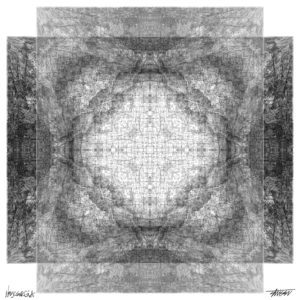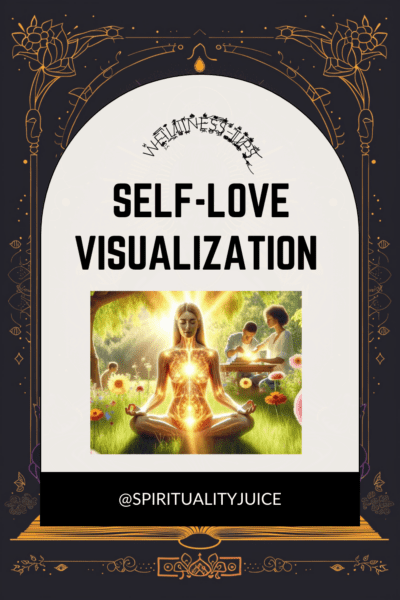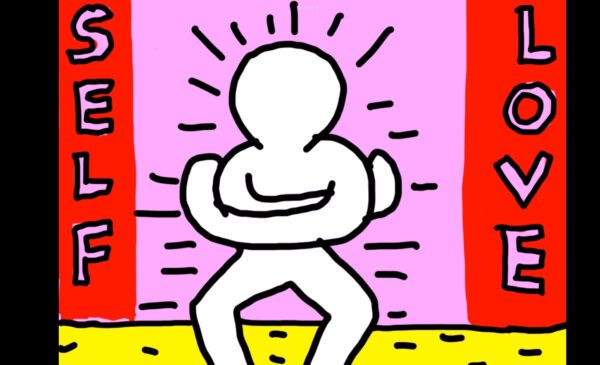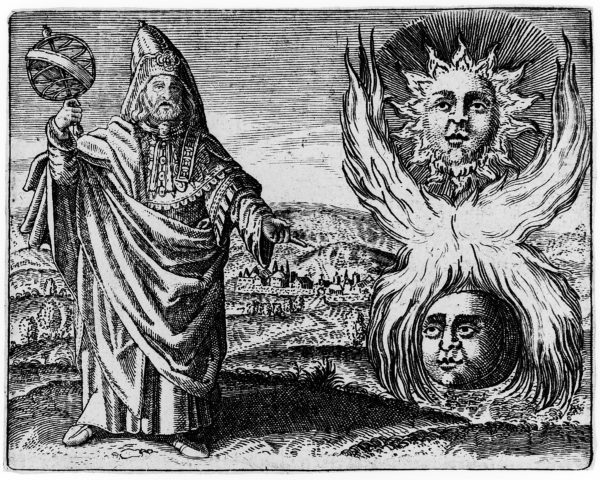One of the most defining characteristics of the human race is its curiosity; its eternal search for wisdom and knowledge. But what if there was some kind of secret knowledge in existence? Some ancient wisdom passed down from generation to generation through secret societies? There is something fascinating about the idea that somewhere out there could be a secret book or hidden vault that would explain all of life’s mysteries and open doors to another realm of wisdom… Now, what if I told you that there is, and its name is Hermeticism? What is Hermeticism you ask? Well, you came to the right place…
What is Hermeticism?
Hermeticism, or Hermetics, is a set of religious and philosophical beliefs based on writings attributed to a mysterious figure known as Hermes Trismegistus (Greek for Thrice-Great Hermes), a Greco-Egyptian form of the Egyptian God of Wisdom and Magic.
According to legend, these texts hold the secrets of the far older, mystical wisdom from Ancient Egypt, and are said to cause a change in anyone who reads them. They document a path of enlightenment and spiritual peace through harmonization of the elements, both in the body and mind. This is believed to ultimately lead to mastery of the self and, through this, life.
Hermeticism also claims to be an ancient philosophy that predates all religions and from which all religions stem. Some Jewish traditions teach that Abraham was taught by Hermes, and some Christian writers in the past believed that Hermes Trismegistus was a pagan prophet who foretold the coming of Christianity.
The writings attributed to him, called Corpus Hermeticum or the Hermetica, are pseudepigraphical, meaning that they were written by someone other than the purported author.
Followers of Hermeticism in ancient times were mostly alchemists and sorcerers or magicians.
Hermes Trismegistus
Hermes Trismegistus was, most likely, not a historical person but a combination of the Egyptian God Thoth of wisdom and the Greek God Hermes, the messenger of the gods. This mysterious figure is considered the founder of religion, science, mathematics, alchemy, geometry, philosophy, magic, and medicine.
Hermes is credited to have written somewhere between 20,000-36,500 works, of which 42 are said were kept in the Great Library of Alexandria. Unfortunately (however, against all odds) only a handful of Hermes’ texts remain today, most of which are compiled into the Corpus Hermeticum.
It is believed that Hermes Trismegistus got his divine wisdom in meditative trances. His knowledge, which covered topics such as chemistry, art, law, magic, medicine, music, philosophy, mathematics, geography, and anatomy, was so vast and all-encompassing that ancient Egyptians called him the communicator or messenger of the gods.
An Amalgamation of People
Hermes Trismegistus may have been an actual living king, and a priest, and a philosopher, as well as a sage, and a sorcerer, and a scientist. He could also have been known by many names.
It is believed that Hermes was, in fact, an amalgamation of several people and mythological figures of ancient history, and the main function of his various “incarnations” was for him to be able to transcribe the word of god.
Some of the mythological and historical figures associated with Hermes Trismegistus are:
- Thoth (Egyptian Paganism): Egyptian God of wisdom, learning, and communications. He is the scribe of the gods and was believed to have invented the alphabet, language, and writing. The Egyptians credited him as the author of all works of philosophy, science, wisdom, religion, and magic. It is believed that Thoth may have actually been an Egyptian priest-king and philosopher who would have lived somewhere around 2,000-1,200 BC;
- Hermes (Greek Paganism): Ancient Greeks identified Thoth with Hermes, son of Zeus and god of science, language, commerce, and writing, as well as the messenger of the gods and the first teacher of alchemy. Hermes was also believed to be the inventor of astrology, astronomy, geometry, mathematics, botany, theology, medicine – basically all branches of knowledge;
- Mercury (Roman Paganism): The Roman adaptation of Hermes is the god Mercury, patron of commerce;
- Enoch/Metatron (Biblical figure in Judaism and Christianism): Enoch is the great-grandfather of Noah who ascends to heaven and becomes the archangel Metatron, a celestial scribe;
- Idris (Islamic prophet): Islamic version of Enoch;
- Nabu (Babylonian): God of wisdom and writing, scribe of Marduk and keeper of the Tablets of Destiny;
- Akhenaten (Egyptian Pharaoh): Reigning between 1,353-1,336 BC, Akhenaten attempted to turn pagan Egypt monotheistic, under one sun god. Tuy, his mother, was likely of Hebrew origin and he was driven out of Egypt. The city with the most monuments to Akhenaten is the city of Hermopolis, which is dedicated to Hermes Trismegistus;
- Moses (Judaism, Christianism, and Islamism): Moses was an Egyptian prince of Hebrew heritage, who lived in Egypt somewhere between 2,000-1,200 BC. He established a monotheistic religion in pagan Egypt but was forced into exile. Moses is credited with the writing of the Torah and the Ten Commandments, which were given to him by god.
Fun fact:
Throughout history, Hermeticism was generally veiled in secrecy and only those who were truly ready could receive the Hermetic teachings. Hermes is also said to have had magical powers that could seal a chest or a box in such a way that it could never be opened again.
In modern times, the term “Hermetically sealed” is commonly used to mean airtight and impervious to gases, and the word “Hermetic” typically means sealed, or secret.
Hermes’ symbol, the caduceus (or serpent staff), is also the modern symbol of medicine and commerce.
The Hermetic Philosophy
God as “the All”
In the philosophical Hermetica, the ultimate reality is called by many names, such as God, Father, Lord, Mind, the Creator, the All, the One, etc. However, the Hermetic view of the divinity is that it is both the all and the creator of the all: all created things pre-exist in God, and God is the nature of the cosmos (being both the substance from which it proceeds and the governing principle which orders it), yet the things themselves and the cosmos were all created by God. Thus, God creates itself, and is both transcendent (as the creator of the cosmos) and immanent (as the created cosmos).

Prisca Theologia
Hermeticism believes in a prisca theologia – the doctrine that a single, true theology exists, that it exists in all religions, and that it was given by God to man in antiquity. To demonstrate the truth of the prisca theologia doctrine, Christians appropriated the Hermetic teachings for their purposes. By this account, Hermes Trismegistus was (according to the fathers of the Christian church) either a contemporary of Moses or the third in a line of men named Hermes – Enoch, Noah, and the Egyptian priest-king who is known to us as Hermes Trismegistus.
“As above, so below”
“As above, so below” is a popular modern paraphrase of the second verse of the Emerald Tablet as it appears in its most widely spread medieval Latin translation:
“Quod est superius est sicut quod inferius, et quod inferius est sicut quod est superius.”
“That which is above is like to that which is below, and that which is below is like to that which is above.”
The Three Parts of Wisdom
Astrology (the operation of the stars): Hermes claims that Zoroaster, a Middle-Eastern philosopher of the 2nd millennium BC and founder of the Zoroastrian religion, discovered this part of the wisdom of the whole universe and taught it to man. In Hermetic philosophy, it is likely that the movements of the planets have meaning beyond the laws of physics and hold metaphorical value as symbols in the mind of The All, or God. Astrology has influences upon the Earth but does not dictate our actions, and wisdom is gained when we know what these influences are and how to deal with them;
Alchemy (the operation of the Sun): Alchemy is not merely the changing of lead into gold. It is an investigation into the spiritual constitution, or life, of matter and material existence through an application of the mysteries of birth, death, and resurrection. The various stages of chemical distillation and fermentation, among other processes, are aspects of these mysteries that, when applied, fasten nature’s processes to bring a natural body to perfection. This perfection is the accomplishment of the magnum opus (Latin for “Great Work”);
Theurgy (the operation of the gods): There are two different types of magic, opposite of each other. The first is Goetia, black magic reliant upon an alliance with evil spirits (such as demons). The second is Theurgy, divine magic reliant upon an alliance with divine spirits (such as angels, archangels, gods).
“Theurgy” translates to “The Science or Art of Divine Works” and is the practical aspect of the Hermetic art of alchemy. Furthermore, alchemy is seen as the “key” to theurgy, the ultimate goal of which is to become united with higher counterparts, leading to the attainment of Divine Consciousness.
Reincarnation
Reincarnation is mentioned in Hermetic texts.
Hermes Trismegistus asked:
“O son, how many bodies have we to pass through, how many bands of demons, through how many series of repetitions and cycles of the stars, before we hasten to the One alone?”
Good and Evil
Hermes explains in the Corpus Hermeticum that nous (knowledge and reason) brings forth either good or evil, depending upon whether one receives one’s perceptions from God or demons. God brings forth good, but demons bring forth evil. Among the evils brought forth by demons are: “murder, adultery, violence to one’s father, ungodliness, sacrilege, strangling, suicide from a cliff and all such other demonic actions”.
This provides evidence that Hermeticism includes a sense of morality. However, the word “good” is used very strictly. It is restricted to references to God. It is only God (in the sense of the nous, not in the sense of the All) who is completely free of evil. Men are prevented from being good because man, having a body, is consumed by his physical nature, and is ignorant of the Supreme Good.
A focus upon the material life is said to be the only thing that offends God:
“As processions passing in the road cannot achieve anything themselves yet still obstruct others, so these men merely process through the universe, led by the pleasures of the body.”
One must create, one must do something positive in one’s life because God is a generative power. Not creating anything leaves a person “sterile” – unable to accomplish anything.

Cosmogony
A creation story is told by God to Hermes in the Corpus Hermeticum. It begins when God, by an act of will, creates the primary matter that is to constitute the cosmos. From primary matter, God separates the four elements (air, fire, water, and earth). Then God orders the elements into the seven heavens (often held to be the spheres of Mercury, Venus, Mars, Jupiter, Saturn, the Sun, and the Moon, which travel in circles and govern destiny).
“The Word” then leaps forth from the materializing four elements, which were unintelligent. Nous then makes the seven heavens spin, and from them spring forth creatures without speech. Earth is then separated from water, and animals (other than man) are brought forth.
God then created androgynous man, in God’s own image, and handed over his creation.
The Fall of Man
Man carefully observed the creation of nous and received from God man’s authority over all creation. Man then rose above the spheres’ paths to better view creation. He then showed the form of the All to Nature. Nature fell in love with the All, and man, seeing his reflection in the water, fell in love with Nature and wished to dwell in it. Immediately, man became one with Nature and became a slave to its limitations, such as sleep and sex. In this way, man became speechless (having lost “the Word”) and he became “double”, being mortal in body yet immortal in spirit, and having authority over all creation yet subject to destiny.

Philosophical and Religious Texts
Some of the most well-known Hermetic texts are:
- Corpus Hermeticum: It is the most widely known Hermetic text. It has 18 chapters, which contain dialogues between Hermes Trismegistus and a series of other men. The first chapter contains a dialogue between Poimandres and Hermes. Poimandres teaches the secrets of the universe to Hermes. In later chapters, Hermes teaches others, such as his son Tat and Asclepius.
- Emerald Tablet: It is a short work attributed to Hermes Trismegistus which was highly regarded by European and Islamic alchemists as the foundation of their art. The text of the Emerald Tablet first appears in several early medieval Arabic sources, the oldest of which dates to the late eighth or early ninth century. Among Neo-Hermeticists, “As above, so below” (a popular modern paraphrase of the second verse of the Tablet) has become an often-cited catchphrase.
- Asclepius (also known as The Perfect Discourse, The Perfect Sermon, or The Perfect Teaching): It was written in the 2nd or 3rd century AD and is a Hermetic work similar in content to the Corpus Hermeticum. It was one of the very few Hermetic works which were available to medieval Latin readers.
Other important original Hermetic texts include “Isis the Prophetess to Her Son Horus”, which consists of a long dialogue between Isis and Horus on the fall of man and other matters; the “Definitions of Hermes Trismegistus to Asclepius”; and many fragments, which are chiefly preserved in the anthology of Stobaeus.

The Destruction of Hermetic Wisdom
Much of the Hermetic and alchemical literature was destroyed throughout ancient history and the remainder shifted to the Islamic world in the period between 400-600 AD, eventually emerging in medieval Europe into the Renaissance.
Christians, starting with Emperor Constantine and his successors, erased almost every trace of Hermeticism from 312 AD until well into the 6th century, destroying temples and sacred texts, and putting to death thousands of pagans, many of whom were Hermetic.
When Hermeticism was no longer endorsed by the Christian church, it was driven underground, and several Hermetic societies were formed. The western esoteric tradition is now steeped in Hermeticism.
A few primarily Hermetic occult orders were founded in the late Middle Ages and early Renaissance well into the late 18th century.
The long list includes secret societies such as the Freemasons, the Rosicrucians, the Hermetic Order of the Golden Dawn, Thelema, as well as modern Paganism, New Age, and Wicca.
The Influence of Hermeticism on the Scientific Revolution
Greek philosopher, astronomer, and mathematician Pythagoras was said to be an initiate to the Hermetic arts, which he studied in Egypt. Plato was deeply influenced by Pythagoras and was also inspired by the Hermetic teachings; some claim he also studied with the Egyptian masters. Both Pythagoras and Plato were influential for early modern scholars of the Scientific Revolution.
Greek philosopher and scientist Aristotle studied at Plato’s Academy in Athens and he taught Alexander the Great, who conquered Egypt in 331 BC and founded Alexandria, a hub for alchemy and Hermeticism.
Contrary to popular belief, Hermeticism, Neoplatonic mysticism and natural magic had a remarkable influence on the Scientific Revolution, which began in the Renaissance period. The Scientific Revolution embraced empiricism, reason, and open inquiry over mysticism, faith, or dogma. Ironically, the Renaissance saw a resurgence of Hermetic ideas, as well as in mythical, magical, and metaphorical ways of thinking.
Indeed, the fathers of modern science and the scientific method were deeply religious and many were esotericists and alchemists, with traditions rooted in Hermeticism.
Hermetic principles can be seen in the works of luminaries such as Nicolaus Copernicus, Robert Boyle, Johannes Kepler, Francis Bacon, and Isaac Newton, as well as medieval philosophers, notably Roger Bacon, but also Islamic philosophers like Avicenna and Al-Kindi.
Copernicus, who presented the first predictive mathematic model for a heliocentric system, describes the sun:
“in the middle of all sits the Sun enthroned. In this most beautiful temple could we place this luminary in any better position from which he can illuminate the whole at once? He is rightly called the Lamp, the Mind, the Ruler of the Universe; Hermes Trismegistus names him the Visible God, Sophocles’ Electra calls him the All-seeing. So the Sun sits as upon a royal throne ruling his children the planets which circle around him.”
Isaac Newton, the father of modern physics, spent most of his time rediscovering the occult wisdom of the ancients, including the Corpus Hermeticum and the Emerald Tablet. Newton was a devout scholar and practitioner of alchemy, which greatly influenced his scientific work, including the laws of motion, the theory of gravity, the invention of calculus, and his work on optics.
Although there is a link between terrestrial and celestial realms in Hermeticism (“As above, so below”), there is the central idea of the progress of knowledge and advancement of learning. In the Hermetic tradition, nature is investigated through observation, experiment, and illumination. Its purpose is to detect and discover that which is invisible and find the hidden linkages between things. The magical tradition within Hermeticism aims to discover the influence of one thing over another, to understand phenomena, and learn how to manipulate them.
Paracelsus was a Renaissance physician, botanist, surgeon, alchemist, astrologer, and is considered the founder of toxicology. He wrote the famous phrase “The dose makes the poison”. Paracelsus had an affinity for Hermetic, Neo-Platonic, and Pythagorean philosophy. He advocated that the final arbiter for a theory should be experience and that humility and diligent labor is necessary.
“he can be surprised by an anomaly- like a white raven- which confounds all the books; and all his experience, everything he has learned at the sickbed, is suddenly gone. Therefore, study each day without respite, investigate and observe diligently; despise nothing, and do not lightly put too much trust in yourself. Do not be arrogant.” – Paracelsus
Today, students of Hermeticism and the occult believe that there is a secret library containing the “42 essential texts” of Hermes Trismegistus that are a kind of New Age holy grail of wisdom. Other New Age philosophers have claimed to have been taught by Hermes Trismegistus while in a trance state.
There are even claims that Hermes Trismegistus was an engineer from the lost city of Atlantis who helped construct the pyramids of Egypt.
Whatever the truth is, certainly it is as wonderful and mystical as the character himself.
What are your thoughts about the mysterious Hermes, or Hermeticism? Please let us known in the comment section down below.




